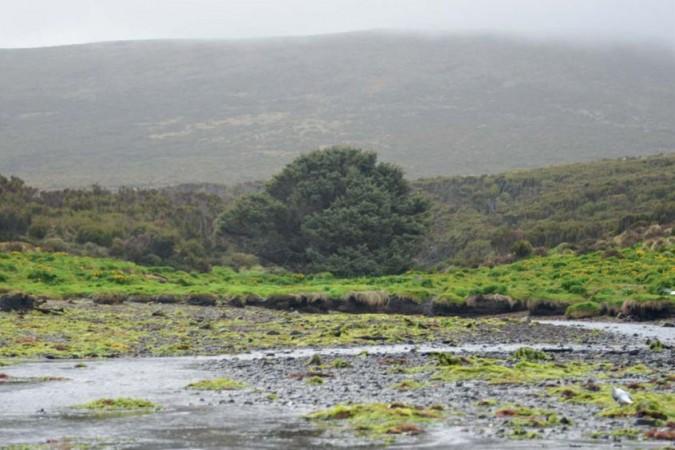
A lonely tree on Campbell Island in the middle of the Southern Ocean has helped scientists unearth a profound secret about the age we are living in. The single Sitka Spruce, which is locally referred to as "the loneliest tree in the world" with the next closest tree over 200 kilometers away, provides strong evidence that the Earth entered an entirely new geological age, the Anthropocene, decades ago.
The tree has been found to have recorded in its heartwood a clear radioactive trace from atmospheric thermonuclear bomb tests in the 1950s and 1960s. Researchers believe that the signal, which was fixed in the wood of the Sitka Spruce by photosynthesis, is a "golden spike" that has helped them determine that the new epoch began between October and December in 1965.
The impact that nuclear weapons testing has had on the planet's atmosphere is the strongest indication that humans are more responsible for all the changes on the Earth than any other species. It's the anthropogenic activity, which is now recognized as the major agent that has profoundly and permanently altered the Earth system, suggesting that we have already entered the human-dominated geological epoch.
"This is an important, yet worrying finding," Christopher Fogwill, Head of the School of Geography, Geology and the Environment at Keele University, said in a statement. "The global atomic bomb signal, captured in the annual rings of this invasive tree species, represents a line in the sand, after which our collective actions have stamped an indelible mark, which will define this new geological epoch for generations to come."
Planted on Campbell Island by the Governor of New Zealand in 1901, the 100-year-old tree is believed to have had an unusual effect because of the oceanic climate. Despite being 10 meters tall, the tree has never produced cones, suggesting that it has remained in a juvenile state ever since.
Various researchers from around the world may have been taking about the so-called Anthropocene, which indicate a precise point in the geological history of Earth where human-driven activities on the planet fundamentally change the natural world. There needs to be a clear "global" signal to officially declare such a new epoch, and researchers believe that the radiocarbon spike found in the Sitka Spruce's wood is that signal.
The spike "gave us a well defined global signature for a new geological epoch that could be preserved in the geological record," the study's lead author Chris Turney from University of New South Wales said in the statement. "Thousands of years from now this golden spike should still stand as a detectable marker for the transformation of the Earth by humankind."
The study was published in the journal Scientific Reports on Monday.
The tree has been given a number of informal awards and titles – it was dubbed the loneliest tree in the world by the Guinness Book of World Records – the closest of its kind being in the Auckland Islands. It is also considered to be the most southern tree in New Zealand.














